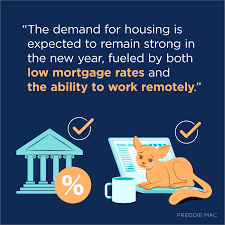
This article will show you how to calculate PMI tax purposes. PMI is a type if mortgage insurance that is exempt from tax. The percentage of the loan amount will determine how much you pay. The loan amount you borrow will affect how much you pay. When the loan balance is 78%, the mortgage insurance must be terminated. This happens usually around the age of 12 years.
Private, tax-deductible mortgage insurance
Private mortgage insurance, which is tax-deductible and is payable by the borrower, is a type that can be used to insure borrowers. This type is generally affordable and plays an essential role in the mortgage lending system. PrivateMI helps homeowners to keep their mortgage payments down and protect them from loss. It is also a tax-deductible expense that borrowers can cancel if they have sufficient equity in their home.
The federal government extended until 2020 the mortgage insurance premium deduction available to borrowers. But it is important to note that this deduction only applies to private mortgage insurance premiums. This deduction is not available for home equity loans and cash-out refinances. A borrower must include their income and itemize taxes to be eligible for the deduction. On mortgages that have been in place for three years or more, the borrower pays mortgage insurance premiums.

LTV
These are the basics of how PMI is calculated. First, the amount of PMI that you are required to pay is determined by your loan-to–value ratio, also known as LTV. LTV stands for the amount of the loan multiplied by the home's actual value. Lenders may refuse to approve your application if the ratio is too high. The lender may request a broker price opinion (BPO) from the broker to confirm the market value of your home and calculate the LTV. You can also request to end your PMI payments early. BPOs and appraisals are typically done at your expense. However, you can save hundreds of dollars by ending your mortgage insurance before it expires.
Your down payment is also a factor in determining the LTV. A 10% downpayment will usually equal a 90% LTV ratio. To avoid PMI, a 10% downpayment will mean that you must pay at least 80% of your loan balance. However, if your mortgage is more than 80% of the original purchase price, you will have to pay PMI until you reach the 15 year mark.
Calculating PMI
The soil chemistry data may be used as a basis for the calculation. Such analysis can help in medical-legal cases as well as in humanitarian recovery. The accuracy of the result depends on the confidence intervals, which should be within 95% of the nominal value. There are many factors that can be used to verify the accuracy of the calculation. These include the cause of death and coverage percentage.
PMI is an additional type of insurance. This insurance is required by borrowers who do not have enough funds to pay the entire loan amount. This additional insurance, depending on the loan-to value ratio, can lower the risk of some mortgages.

Getting out of paying PMI
There are many ways to avoid paying PMI on your mortgage. One way is to get your loan-to-value ratio down to 80% or less. To do so, you will need to make timely payments on your mortgage and prove that you have no other liens on the home. Information on how to cancel PMI can be found in the Homeowners Protection Act.
Another option is to pay at least 20% down. This way, you can avoid paying PMI for a longer period of time. These methods may be easier than others but it can take a long time to complete.
FAQ
How can I fix my roof
Roofs can leak due to age, wear, improper maintenance, or weather issues. For minor repairs and replacements, roofing contractors are available. Get in touch with us to learn more.
How long does it take to get a mortgage approved?
It depends on several factors such as credit score, income level, type of loan, etc. It usually takes between 30 and 60 days to get approved for a mortgage.
How do you calculate your interest rate?
Market conditions impact the rates of interest. In the last week, the average interest rate was 4.39%. Add the number of years that you plan to finance to get your interest rates. For example, if you finance $200,000 over 20 years at 5% per year, your interest rate is 0.05 x 20 1%, which equals ten basis points.
Statistics
- It's possible to get approved for an FHA loan with a credit score as low as 580 and a down payment of 3.5% or a credit score as low as 500 and a 10% down payment.5 Specialty mortgage loans are loans that don't fit into the conventional or FHA loan categories. (investopedia.com)
- When it came to buying a home in 2015, experts predicted that mortgage rates would surpass five percent, yet interest rates remained below four percent. (fortunebuilders.com)
- 10 years ago, homeownership was nearly 70%. (fortunebuilders.com)
- Over the past year, mortgage rates have hovered between 3.9 and 4.5 percent—a less significant increase. (fortunebuilders.com)
- This seems to be a more popular trend as the U.S. Census Bureau reports the homeownership rate was around 65% last year. (fortunebuilders.com)
External Links
How To
How to become a real estate broker
You must first take an introductory course to become a licensed real estate agent.
Next, pass a qualifying test that will assess your knowledge of the subject. This involves studying for at least 2 hours per day over a period of 3 months.
Once you have passed the initial exam, you will be ready for the final. To be a licensed real estate agent, you must achieve a minimum score of 80%.
Once you have passed these tests, you are qualified to become a real estate agent.